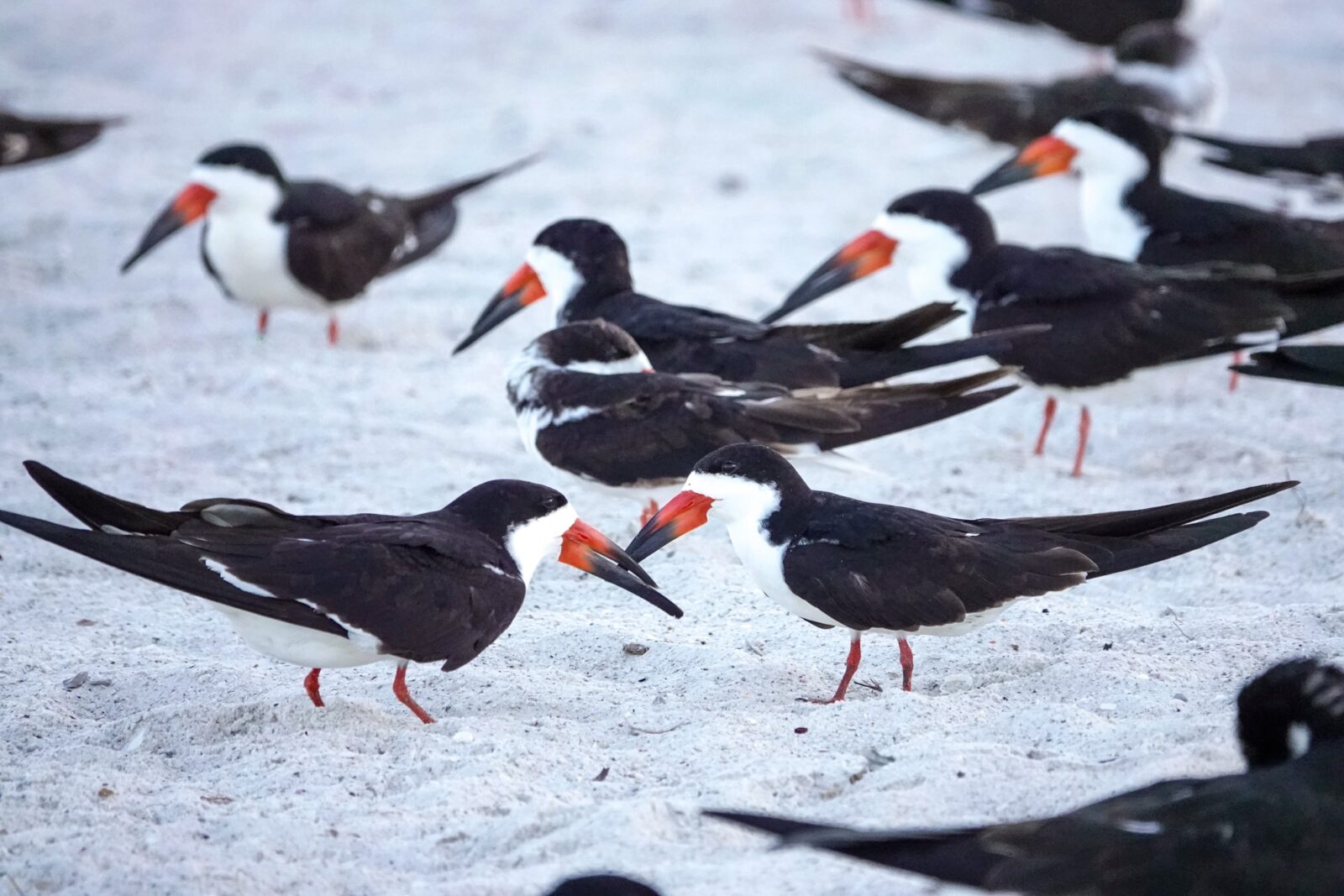Anna Maria Island Turtle Watch and Shorebird Monitoring Posts Black Skimmer Colony

Anna Maria Island Turtle Watch and Shorebird Monitoring (AMITWSBM) have cordoned off an area in Bradenton Beach where Black Skimmers have been gathering for the last week.
Black Skimmers spend their entire lives in coastal areas, usually around sandy beaches and islands, although a few colonies can be found in inland locations with very large lakes, particularly in Florida and California. Nesting birds use open sandy areas, gravel or shell bars with sparse vegetation, or broad mats of wrack (dead vegetation) in saltmarsh. Foraging birds frequent places that concentrate prey: tidal waters of bays, estuaries, lagoons, creeks, rivers, ditches, and saltmarsh pools. Because so many coastal habitats have been developed or otherwise modified, skimmers have become limited in their distribution over most of their range.
Mates take turns scraping, using an exaggerated posture (with the neck, head, bill, and tail raised) to kick sand behind them with alternating foot strokes. They then rotate in their scrape to create a saucer-shaped depression, like the resting scrapes they use throughout the year. The depression takes only a few minutes to create, and the birds may make several scrapes before eggs are laid. Males do more scraping and make larger scrapes than females. The average scrape is 10 inches in diameter and 1 inch deep.
If the skimmers nest in this location, it will be the first time since 2017 that Anna Maria Island has had a colony of nesting Black Skimmers. Previous colonies failed due to human interference. While the perimeter has been roped off, it is important that people stay away from the birds. Since they haven’t settled on an exact location yet, they may be establishing nest sites outside of the posted area. If birds are flushed while establishing a nest site, they may move to a less suitable location. If birds are flushed from their nests, the eggs become susceptible to predators. Black skimmers are designated as a threatened species in Florida and are protected under the U.S. Migratory Bird Treaty Act.
AMITWSBM is a nonprofit that collects data on sea turtles and shorebirds.
Beachgoers can help! While enjoying the beach, take these simple steps:
- Keep your distance. If birds become agitated or leave their nests you are too close!! A general rule is to stay at least 300 feet away from a nest.
- Respect posted areas. Avoid posted nesting and resting areas and use designated walkways.
- Never intentionally force birds to fly. When birds are chased or disturbed, they use energy they need to reserve for nesting and migration.
- Keep pets away from nesting areas. Even well-behaved pets can be perceived as a threat to birds and will disturb them. Keep cats indoors.
- Keep the beach clean and do not feed wildlife. Food scraps attract predators such as racoons and crows to the beaches. Litter on beaches can entangle birds.
- Spread the word! If you see people disturbing nesting birds, gently remind them how their actions may hurt birds’ survival. If they continue to disturb nesting birds, please call and report their activities to FWC’s Wildlife Alert hotline at 888-404-FWCC (3922)
For more information or ways to help protect nesting shorebirds and seabirds, please visit islandturtlewatch.com
